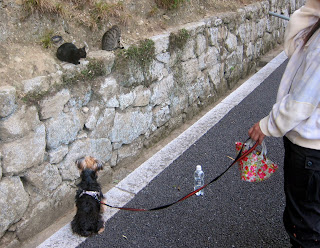2012
ウイスキー博士
Imagine a small bar that stocks 500 bottles of liquor, including the best single malt scotch and Kentucky bourbon that money can. It serves its patrons in a stark white room with bare walls, one table and seven or eight stools. The sound- track is classic acoustic jazz wafting through the air
This is the creation of Akio Ishibashi who has run this bar in eastern Kyōto for twenty-seven years. It has a very provocative name, a sexual term spelled out discreetly in swirly roman letter on the neon sign above his door. Sadly, the name of the bar is not fit to publish in a family blog like this, but take my word -- it is a metaphor that precisely fits the mood of the place.
Ishibashi has never gone to Scotland but he has intricate knowledge of the little-known distilleries in in the highlands and the lowlands. He stocks twenty nine brands of bourbon and can explain in detail the difference between Kentucky bourbon and Tennessee whiskey. He's master in the art of mixed drinks as well, using a cocktail shaker brisk and firm without a wasted movement.
This bartender had one kind of glass for my shot of Dalmore 12 years, high and curved designed to sniff before sipping, and a solid tumbler for my Elijah Craig 47% bourbon.When my blood sugar ran a little low I asked him for a glass of orange juice. He didn't pull a carton of OJ from the fridge in the back room, as I expected. He squeezed oranges behind the bar, cooled the juice in his cocktail shaker and poured into a tall glass with a frozen stick of orange juice inside to keep the concoction ice cold. It was my first glass of $9 orange juice bur worth every yen.
 |
| Sample from the four-page menu of drinks |
Slim and moon-faced, the man is self-taught in the canon of booze. He gets his information by reading books, journals and magazines and has only recently taken advantage of the Internet.
He keeps a low profile. He doesn't advertise and he tries his best to keep his bar out magazines, restaurant guides and, yes, blogs. Word of mouth is his marketing strategy, he says, and it's worked just fine for nearly three decades.
He balked when I addressed him by the honorific
sensei. "Just call me Ishibashi." Whatever term of respect you attach to his name, Ishibashi-san certainly can be called the mild-mannered Whiskey Scholar of Kyoto.
And the name of the bar is . . .





















































